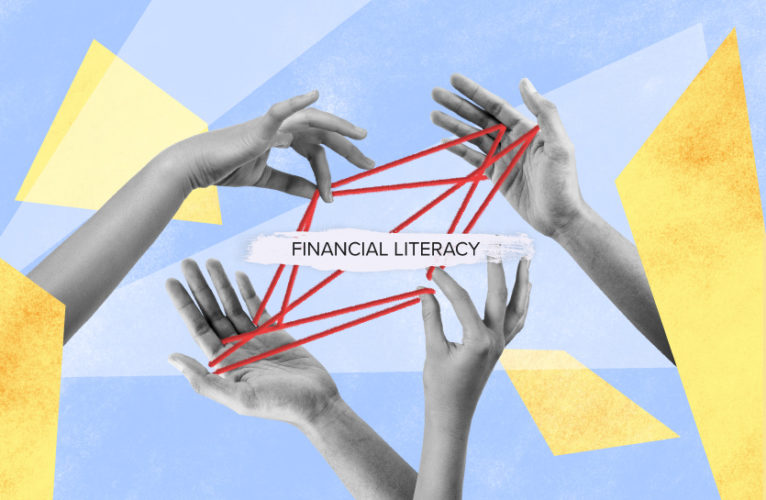An unexpected key to financial literacy
November 03, 2021
6 min read
A charitable giving strategy can improve your financial skills and update your money mindset.
Charitable giving can be an effective pathway to develop some pretty high-level money management skills.
Quick side note: It can be helpful to talk to your advisor to learn even more about how you can optimize your charitable giving and enhance your financial literacy. We can work directly with financial advisors to support your giving and with all the details from beginning to end of each donation.
Here are 5 ways that thinking charity can expand your financial knowledge.
1. Learn more about (and optimize) your taxes.
Giving charitably allows you to access a tax receipt that translates into tax credits. A donor-advised fund (DAF), like Charitable Impact, allows you to access an immediate tax receipt even if you don’t know which charities you would like to support.
Canada has one of the most generous charitable tax credit programs in the world. Percentages of tax credits range depending on the province you live in. At the federal level, the credit can be up to 33% of the amount donated (depending on your income).
Adding on provincial tax credits, you can get up to about half of your donation back in your pocket—to give more or spend in other ways. Check out this charitable tax credit calculator to better budget for your giving.
2. Evaluate your assets to add value to charitable contributions.
Building a charitable giving plan can be an opportunity to chart out and gain an understanding of the value of your assets. Assets available to donate to a DAF include privately traded securities, life insurance, real estate, and even art. When you donate these assets through a DAF, you receive support in valuation and can invest in giving.
“Non-cash assets can allow you to achieve bigger financial and philanthropic goals. A donor-advised fund, like Charitable Impact, can help make the process run smoothly and support you with all the finer details of donating non-cash assets,” said Robert Bancroft, Senior Advisor, Charitable Investment Programs with Charitable Impact. “There are benefits and considerations that you should discuss with your financial advisor.”
Another salient detail to consider: Publicly traded securities are the most tax-effective way to give. By donating these stocks in-kind, you access a charitable tax credit while you save on capital gains taxes. If you are curious, talk to us to find out more.
3. Set your priorities to make your spending and giving more meaningful.
We don’t want to imply that budgeting for or spending on charity is easy, because it’s not. It takes contemplation and prioritization. There may be more pressing demands on your funds or times when you are unable to give. If you can, consider how you can donate your time or skills to charities you want to support—which is all part of philanthropy.
To start your giving mission, find out what causes drive you and make you feel most engaged in your generosity. Focus on a few charities to start and learn from your experiences in giving—what did you enjoy most? “Defining your philanthropic goals can make giving feel more meaningful and personally satisfying,” said Nicole Macdonald, Manager, Philanthropic Advisory, Charitable Impact. If you need support, you can always reach out to us.
You can apply similar thinking to your everyday spending. Outline the values that drive your spending and your giving. Are you making any regular impulse purchases that don’t align with where you actually want to spend your money?
This doesn’t necessarily mean you have to give everything up (we get it, treating yourself is important!). Explore your spending habits and think about your options to spend more mindfully.
4. Aim for ambitious goals while keeping a budget.
Did you know that by giving a little each month, you may actually be able to give more over time than if you were to give a large one-time gift to a charity? With charitable giving (as with all spending), once you have defined your priorities you can make big goals for yourself to work towards incrementally.
Just as you set aside for your retirement, investing in education, or your savings, you can automatically set aside money each month towards your generosity. An Impact Account makes organizing this task easy, as you have access to something like a savings account for your giving.
Building habits starts with small steps—what can you do today?
5. Think about your financial legacy.
Many people shy away from this part of financial literacy because, well, it’s not the sunniest of topics. But it is inevitably important and, with some planning and advice, a financial and philanthropic legacy is within reach for everyone. Writing a will is a smart place to start.
The bright side is you can pass along gifts to charity at the end of life and plant the trees that will thrive for future generations. Designating a DAF in your will allows you to have a generous legacy without knowing exactly where to give.
Interests and priorities can evolve over time. With a DAF, you can change your mind on which charity you want to leave to without the legal paperwork of needing to update your will. A DAF also provides the opportunity to pass along philanthropic opportunities to your loved ones. Talk to us to find out more. We’re here to answer any of your questions about giving at [email protected].
We hope you find this material useful in learning about giving. However, you should never use this material without first reviewing it with your own lawyer(s) and tax advisor(s) to determine its suitability for your circumstances. This material is not legal, tax, or other professional advice.

